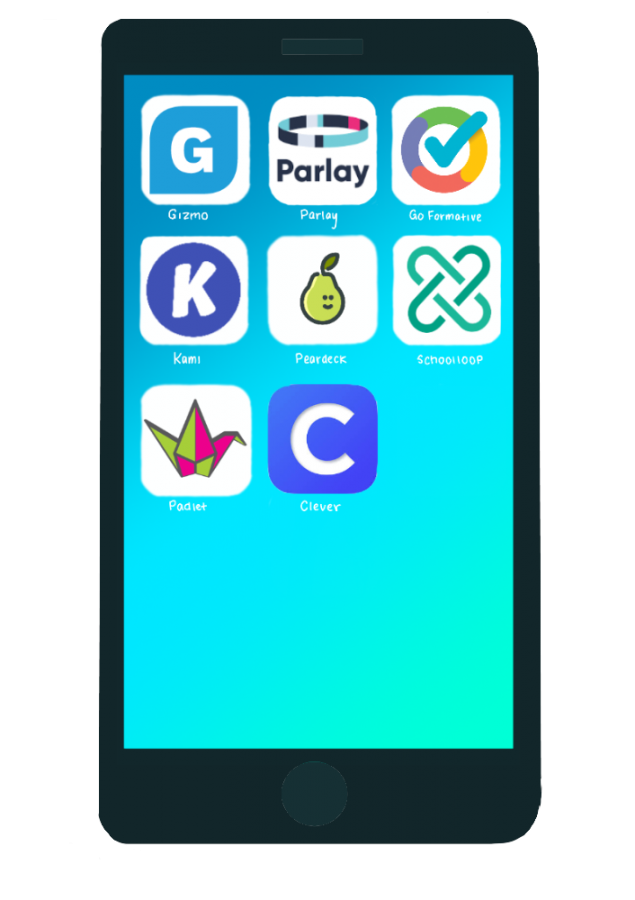DISTANCE LEARNING: Classes adapt to online classroom by utilizing various apps
At the start of the 2020-21 school year, each SCHS department was asked what resources they needed to make online learning easier for them and their students. Many departments resorted to apps, which are supposed to increase student connectivity and emphasize student-centered learning.
According to science teacher and department co-chair Sara Carvalho, the science department chose a new app called Gizmos, which simulates labs and scientific experiments.
“Once we knew we were going to be in distance learning all first semester, we realized that if we wanted to provide a good science experience, we needed to have some kind of simulation software, and that’s the best one there is,” Carvalho said.
After the SCUSD school board approved the purchase, the science department started using Gizmos to its fullest potential. An issue, however, quickly arose.
“Part of the problem is lack of technology,” Carvalho said. “I don’t think the Chromebooks are meant for distance learning. . . They’re not really meant to be on eight hours a day, multiple tabs open.”
At the beginning of the school year, the English department also sought an app – Parlay – which hosts virtual Socratic Seminars.
“It seemed like a really good opportunity to be able to use Socratic Seminar type format in a virtual realm,” English teacher Daniel Eaton said.
Parlay is still in a Beta stage, and thus is not fully available for student-centered learning. There are, however, plans to fully implement the app in class
“It (Parlay) could be a jumping off point for a lot of different assignments, and I think in the English department, it could be used to share ideas,” Eaton said. “It records data about the discussion – it offers a lot of powerful opportunities.”
While the English and science departments chose to add more technology into their curriculum, social studies teacher Emily Haven believes that in certain cases, too much technology can be detrimental.
“As much as I love using technology in the classroom, I have also learned that simplicity lowers your cognitive load as students, and that is important as well,” Haven said.
Some students agree, and believe too many apps can be overwhelming.
“I feel that teachers should try to use as little apps as possible to do as many things as possible,” freshman Aidan Powell said. “For example, Clever is entirely redundant because of Google Classroom and is a very poor alternative.”
Clever is an app that works as a virtual hub to access all accounts and apps that teachers use in distance learning. For sophomore Sydney Chou, the implementation of applications has been a positive.
“They (the apps) are helpful because otherwise we’d be doing everything on paper, which is hard to have the motivation for,” Chou said.
According to Carvalho, some of the apps can have benefits even with in-person or hybrid learning to continue enforcing social distancing regulations.
“Even if we were to come back to school, Gizmos would be a very big part of our science curriculum,” Carvalho said. “Obviously because you can’t sit together, you can’t be in a group, you can’t share equipment.”
The apps have been a helpful method, but the feeling of a classroom seems to be impossible to recreate over a screen, according to Carvalho.
“I don’t think there’s anything that can mimic it (in-person learning),” Carvalho said.


